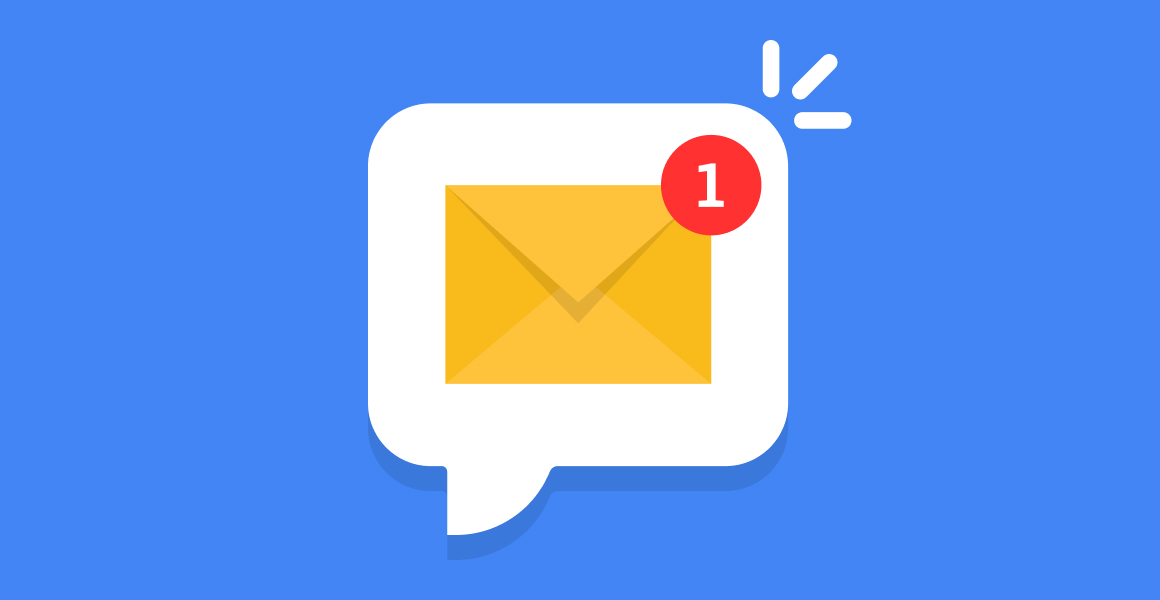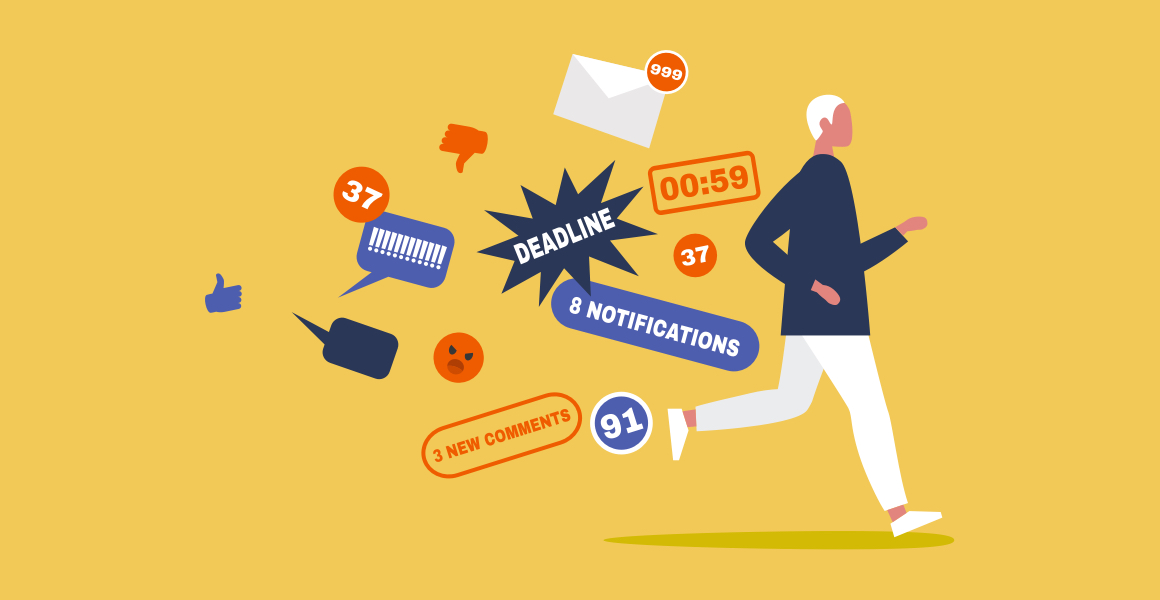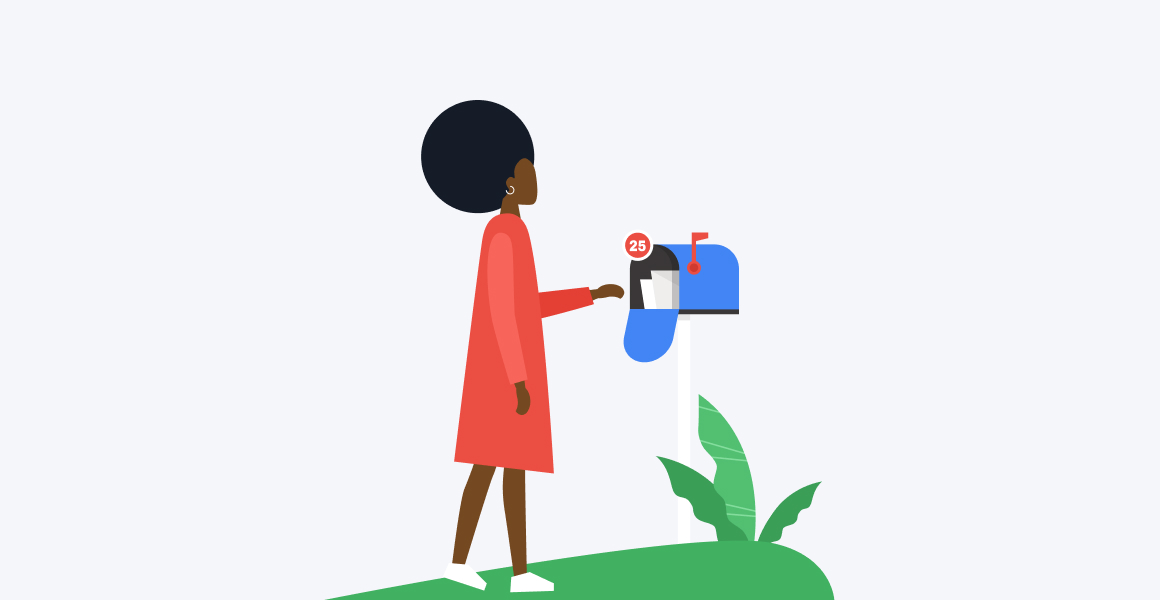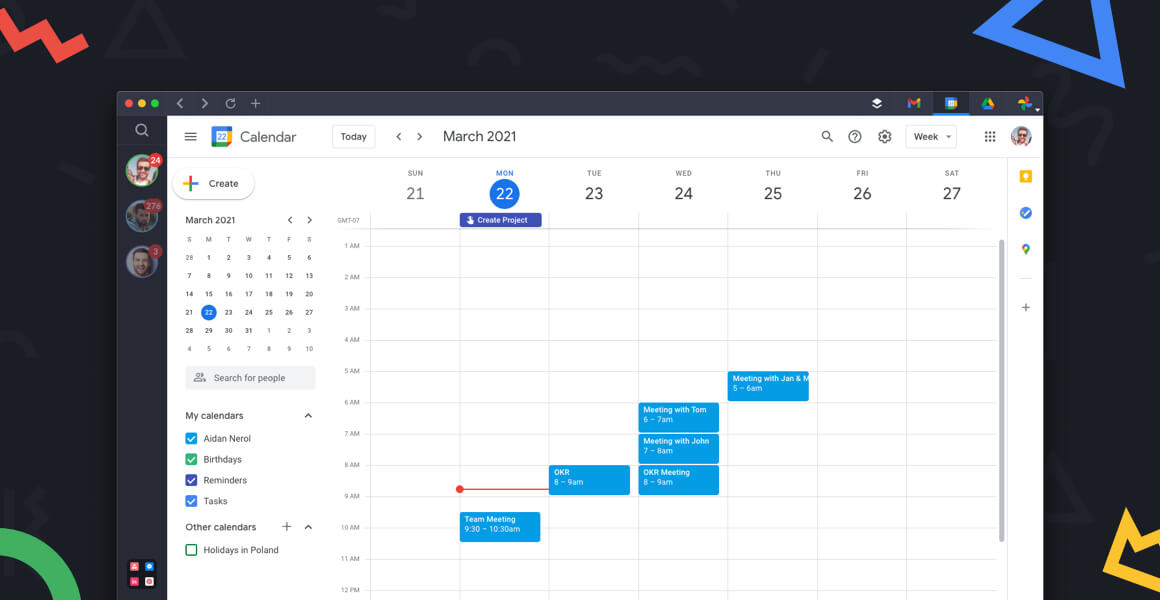In our hyper-connected world, notifications are a necessary part of life. They’re not only something we tolerate, but something that can be genuinely helpful. Notifications enable us to stay up to date on what matters to us. They help us to communicate, stay engaged, and get things done. You can receive notifications from your email, from various apps that you use, from social media - the list of places that likely send you notifications is endless.
So what do you do when simply managing those notifications becomes too time-consuming? Too many notifications can become an annoyance and actually be counter-productive. If only there was some sort of notification aggregator that allowed you to view all of your notifications in one place, in a way that’s convenient to you. If it sounds like we are onto something, keep reading.
Are Too Many Notifications a Problem?
Think about the accounts and apps you use on your desktop. No doubt you make use of many platforms to help you in your personal or work life. Most likely your goal is to save time, be more productive, communicate with others, and get certain things done. The problem is, each of these systems is likely to send you notifications. Otherwise, how would you know what you need to look at in each one? And simply noticing notifications can be distracting, let alone taking the time to read each of them, perhaps clicking into the platform, and then taking an action. You can see how notifications pile up and actually end up being the opposite of valuable.
There’s a lot of research out there that shows that notifications can quickly cross a line from enabling productivity to being distracting and even inducing stress. Many studies are focused on mobile phone behavior, but we can assume the same concepts apply to behavior on a desktop. For example, a study from Deloitte found that people check their phone a whopping 47 times per day, and often in response to alerts. On a desktop, you’re likely getting notifications from at least one email account, a collaboration platform like Teams or Slack, your calendar reminders, social media platforms, and more. Today’s communication tools have made it much easier for groups to collaborate, and that can be a big time saver. For example, leveraging Slack to ask a colleague a quick question can save a lot of time vs. walking over to their desk. Even so, all of these communications result in notifications that come through on your desktop.
How often are you in the middle of a task and then interrupted by a notification on your desktop? Does it send you down a rabbit hole, or force you to open another software system? If so, that can be potentially time-consuming and irritating.
Whether it’s messages from your friends, family, boss, or bank, a notification pulls your attention to a platform that you may not have planned to engage with right at that moment. Furthermore, apps and other software systems are designed to capture and keep your attention - and they’ve found that notifications are a really good way to do that. Not only that, many systems being linked in a highly digitized environment means notifications often end up pushing us from app to app or from system to system. Do you ever get an email notification that forces you to open another website, or grab a link from Google Drive? These small and seemingly insignificant activities add up throughout your day and make more of an impact than you think.
Related Article: How to Avoid Notification Overload
What is a Notification Aggregator?
A notification aggregator is a system that collects your notifications and displays them to you in a streamlined format, so that you are not at the mercy of several different platforms sending you push notifications and distracting you throughout the day. There are a few different options for notification aggregator phone apps - but fewer options for desktop usage. Though desktops tend to experience less notifications than mobile devices, users still receive a lot of them. Your best bet may be to dig into specific settings and make adjustments that will make you happier with your notification management.
Here is what you can try on the various operating systems that support notifications:
Windows 10 PC - Open the settings menu and choose System. This will take you to the controls options where you will see “Notifications and actions” and you can toggle the “notifications” option on or off. Turn it off in order to stop notifications.
Mac - Open the System Preferences icon and find “Notifications controls”. Click the notifications icon to manage the banners and noises coming from a Mac when alerts arrive.
Most browsers also offer options for managing notifications, particularly from certain websites. For example, you can go to the settings or preferences area for Google Chrome, Mozilla Firefox, Opera, or Safari, and find the notification section to make changes. Any browser that you work with regularly likely offers you the option to scale back your notifications, but you might have to do some digging in the system menu or settings.
Finally, Mac system settings can actually minimize or disable notifications all at once. By utilizing the “Do not disturb” mode, you can temporarily make these changes. The “Focus assist” mode in Windows 10 offers similar functionality. This used to be called “Quiet hours” in previous versions, but the control it offers is the same. These settings were originally created for when people need to do something uninterrupted - like take a nap or stream an important video - but they work for just generally trying to decrease your notifications. You may want to set up a daily schedule to suppress alerts, for example, during your sleeping hours, or the first two hours of your day at work when you are trying to catch up on your most critical tasks.
Related Article: How to Get All of Your Notifications in One Place
Shift Can Help to Consolidate Notifications
The tips we just mentioned are great, and can make a difference. However, they are really just addressing a symptom of a bigger issue. It would really be helpful if there was a better way altogether to streamline notifications and deal with them in the ways that are best for your working style. That’s where Shift comes in.
Shift offers notification management that can apply across all the apps you use every day, from Outlook to Facebook to Slack and beyond. With a couple of clicks, you can mute all notifications temporarily or control the sounds that play when a notification comes through. Shift brings together all of the notifications from any of your apps and email accounts and displays them in one place. You don’t have to look in multiple places anymore just to see what new alerts you have. Instead, you can simply check the number that appears in the little red bubble on the Shift icon in your taskbar, and there you go! This is truly the easiest way to avoid overload from push notifications. Users save a ton of time that previously was wasted switching between apps and bouncing around from notification to notification. Not only that, you can even turn off notifications or remove the notification badge for particular apps within Shift if you don’t want to be alerted to things within that particular platform.
Furthermore, an aggregator like Shift will make sure you have all your apps in one place. As you go through the process of linking your favorite tools, you’ll see software and apps that you don’t use anymore. As you deactivate and delete those tools, you’ll lose any notifications that went with those services. It’s not only streamlining your entire desktop, but you’re deleting time-sinks in the process.
What Types of Notifications Can Shift Manage?
When you hear “notifications”, it's easy to think of your phone. However, it’s important to remember that notifications are a crucial part of the software world and deeply ingrained into our daily lives whenever we are in front of any type of screen. Consider the various forms of notifications that come through on your computer every day. Some of the most common systems that are guilty of cluttering mental space with alerts are:
- Email messages - This is a huge one for people sitting in front of a desktop computer every day. Many people have trouble turning off alerts for email because they don’t want to miss anything. The problem is, email alerts are particularly distracting because they often come with an action item. After all, if the person emailing you didn’t need something, there probably wouldn’t be a need for the message at all, right? Depending on the type of job you have, you may only be able to reduce or better organize these notifications, rather than getting rid of them altogether.
Related Article: How to Organize Your Email Accounts
- Calendar appointments - Some people find calendar reminders incredibly valuable - and in fact, may never get to meetings on time without them. Others find them a nuisance and don’t want to be reminded multiple times of a meeting - especially if they are trying to wrap up work before walking into one. If you fall in the camp that doesn’t find them helpful, it’s worth addressing.
Related Article: How to Get a Google Calendar App for Desktop
- Task list reminders - Task management software can be incredibly helpful - but that doesn’t mean the notifications you get from them always are. If you make a to-do list using a software system, you are likely to get notifications.
- Project management alerts - Many workplaces use project management apps and the productivity and time-keeping they enable can be powerful motivators to use them. However, you are likely to get notifications from them, which you may or may not like. Which alerts you need are probably negotiable. You should make sure you are available for urgent situations, so simply turning off notifications isn’t the best option. Rather, finding better ways to manage these alerts would be more beneficial.
- Social media - Social media isn’t a great use of your workday anyway (unless it’s part of your job). That doesn’t mean most people don’t log in and check social media during their day. If the notifications don’t relate to your specific business or job accounts, you might be better off simply turning off these notifications.
Related Article: How to Manage All Your Social Media Accounts in One Place
- News alerts - It’s always good to know if there’s truly breaking news happening, but in most circumstances that is pretty rare. News alerts are particularly susceptible to causing distractions, as many people will end up clicking on the link to an article. And once you read an article, you might be tempted to find even more information. Before you know it, an hour has gone by and you can’t even find the original task you were working on. Alerts for news that doesn’t pertain to you locally or that doesn’t require an immediate action on your part can probably be reduced.
- Group chat apps - These platforms were designed to save time and facilitate communication. Tools like Slack can make a big difference in a team’s performance. However, if your workplace uses those tools, you’re likely to get notifications throughout the day. You may also be getting email or text notifications about the same set of information. A constant stream of messages is sure to cut into your productivity. Not only that, it may increase your stress level.
Related Article: How to Combine All of Your Messaging Apps in One Place
Shift is a powerful tool for people who are trying to work more productively in their desktop environment. Anyone who uses online platforms will find Shift to be a valuable resource. With Shift, you can organize and manage the following:
- Mail - Connect all of your Gmail, Outlook, and Office 365 accounts and manage everything from one centralized workstation.
- Apps - WhatsApp, Slack, Messenger—we have everything you need to get it done. Browse our Apps Directory, connect yours, and switch between them easily.
- Search - Save time and find exactly what you're looking for across any of your Mail, Calendar, and Drive accounts.
- Chrome extensions - Enjoy access to Boomerang, Grammarly, LastPass, and many of your other favorite Chrome Extensions.
- Focused web tabs - Access the web from inside Shift. Manage your tabs and organize them by account for a better browsing experience.
- Workspaces - Create a Workspace with the exact apps, tabs, and bookmarks you need, then share it with your team to get the job done.
- Account management - Toggle between your most-used accounts, check notifications and streamline your workflow.
If you’re ready to have more control over the notifications you get every day, give Shift a try. It will help you to keep everything in one place and skip the logging in and out - saving valuable time and even reducing stress for a calmer and more productive desktop experience.





















 Share on Facebook
Share on Facebook Share on Twitter
Share on Twitter







